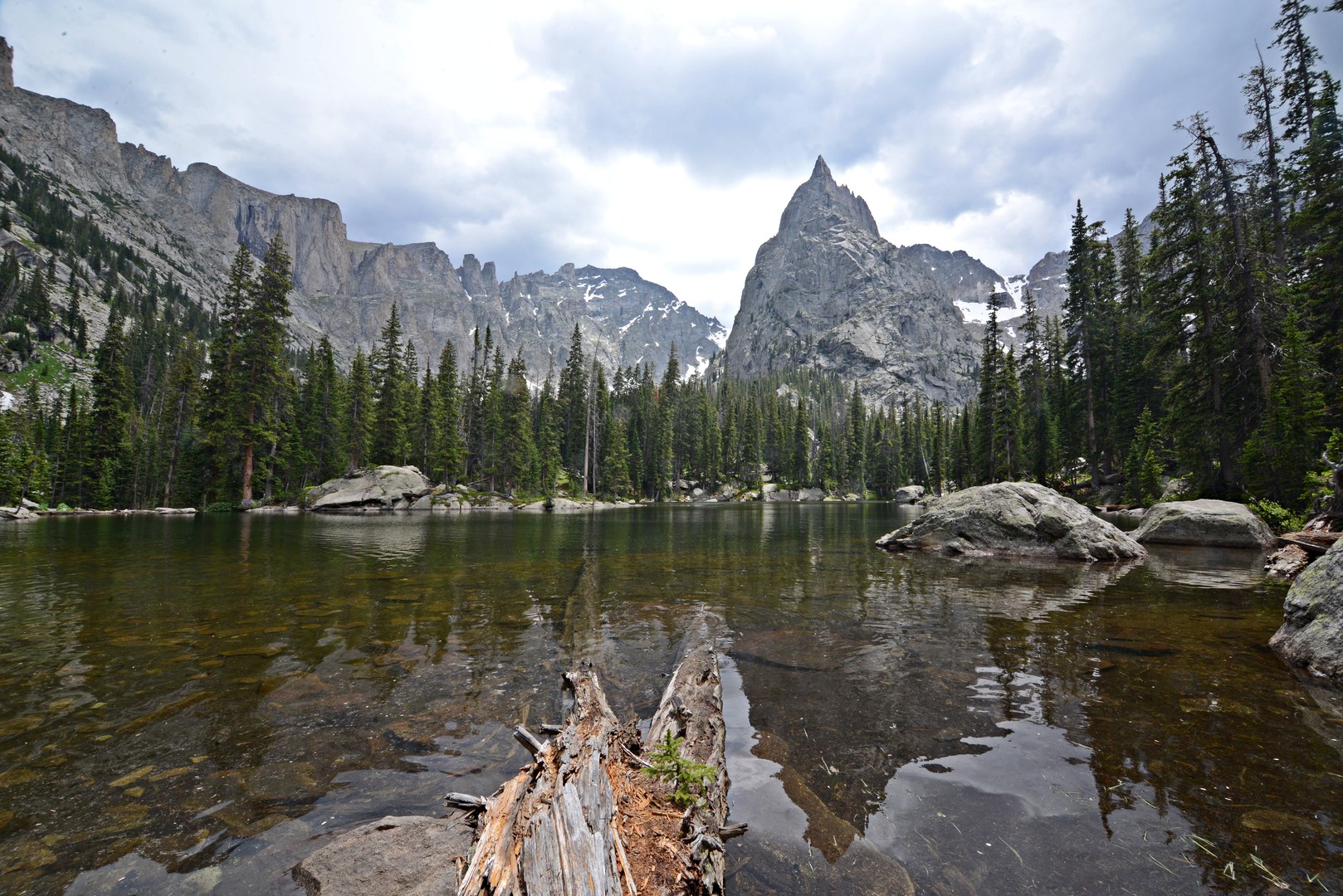You are here
The Indian Peaks Wilderness offers nature lovers an assortment of beautiful wildlife and mountain landscapes to explore in the backyard of the Denver metro area. One of the most sought-after attractions is via the Cascade Creek Trail up to Lone Eagle Peak and Crater Lake. This peak is famous for its nearly vertical spire summit that stands prominently at the base of Crater Lake and the surrounding alpine cirque.
The trail up to Crater Lake is no less impressive than the cirque above. To access Crater Lake from the west side of the continental divide, park at the Monarch Lake Trailhead east of Lake Granby along Colorado Road 6. Parking will tend to fill up by 10 a.m. on weekday mornings, so plan to arrive early. There is a $5 parking fee, and a national park pass also pays the way in. Please register at the volunteer ranger station before hitting the trail.
Beginning on the north side of Monarch Lake, the trail starts off along a sandy path amongst tall ponderosa and fir trees. The first 1.1 miles is straightforward and flat until the east end of the lake. At this mileage, you enter the Indian Peaks Wilderness boundary. Within another quarter-mile you will reach a trail junction for Crater Lake and Gourd Lake. Turn north toward Crater Lake via the Cascade Creek Trail.
Now heading northeast, the trail follows Buchanan Creek. Watch for wildlife, as moose tend to linger in the marshy grass along the creek beds here. Moose tend to be aggressive if they are with their young, so mind your distance.
Continue 1.9 miles following the trail past Hells Canyon to the left and Shelter Rock Campground to the confluence of Cascade Creek. At this creek junction are a series of beautiful waterfalls that make for a good resting spot.
The route now begins to ascend up a series of gradual switchbacks through the forest. The trail continues this gradual ascent over the next few miles. Another series of amazing waterfalls are displayed as you walk through patches of alpine wildflowers. A few examples of wildflowers in this area include Colorado columbine, cinquefoil, Canadian thistle and Indian paintbrush.
The trail eventually enters a clearcut opening, providing a good glimpse of the Apache Peak crags and surrounding cirque that lies ahead along the trail. A handful of creek crossings and steeper switchbacks scatter the remaining ascent. Once at 10,200 feet, most of the elevation gain has been completed and Lone Eagle Peak stands prominently in view. Continue along the trail to Carter Lake, where you can soak in the surrounding beauty of the Indian Peaks Wilderness. Lone Eagle Peaks stands tall at 11,919 feet. Camping is permitted in the area with an obtained permit. Permits can tend to go fast, so plan overnight trips well in advance with the Forest Service office.
Afternoon thunderstorms tend to roll into the high country around mid-afternoon. Make your way back down to the trailhead prior to any potential lightning storms. The total route is approximately 15.5 miles or 6.5 hours at a steady pace. Heavy backpacks may increase your travel time.
Lone Eagle Peak and Crater lake are a truly spectacular sight to be seen, and they not to be missed if looking for a good adventure along the Colorado Front Range.
Logistics + Planning
Current Weather: Powered by Dark Sky






























Comments
Sign In and share them.